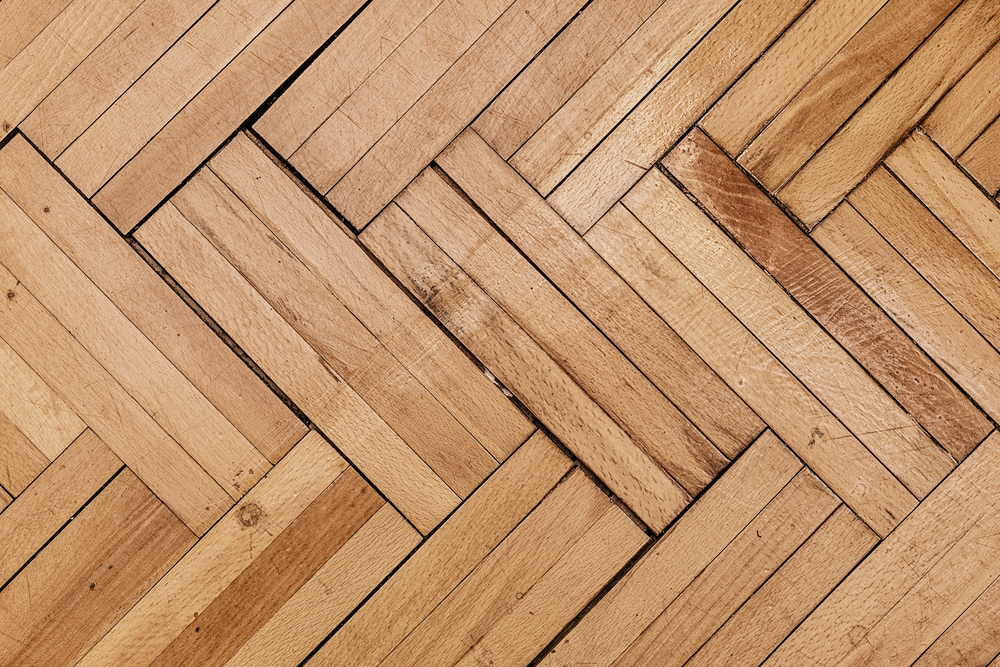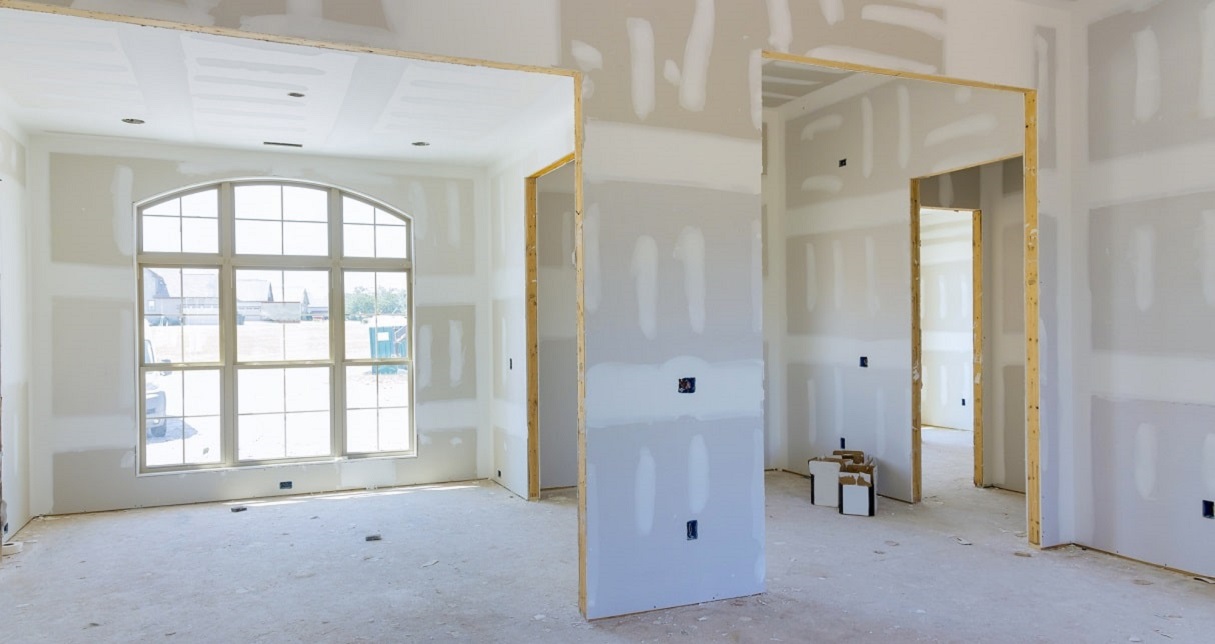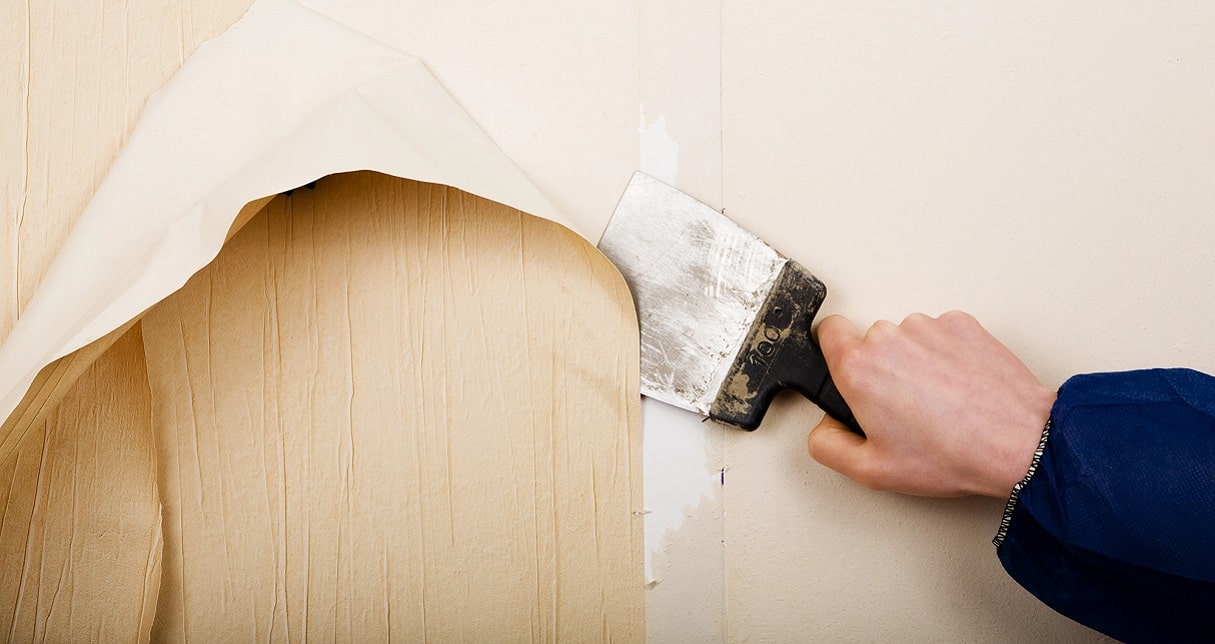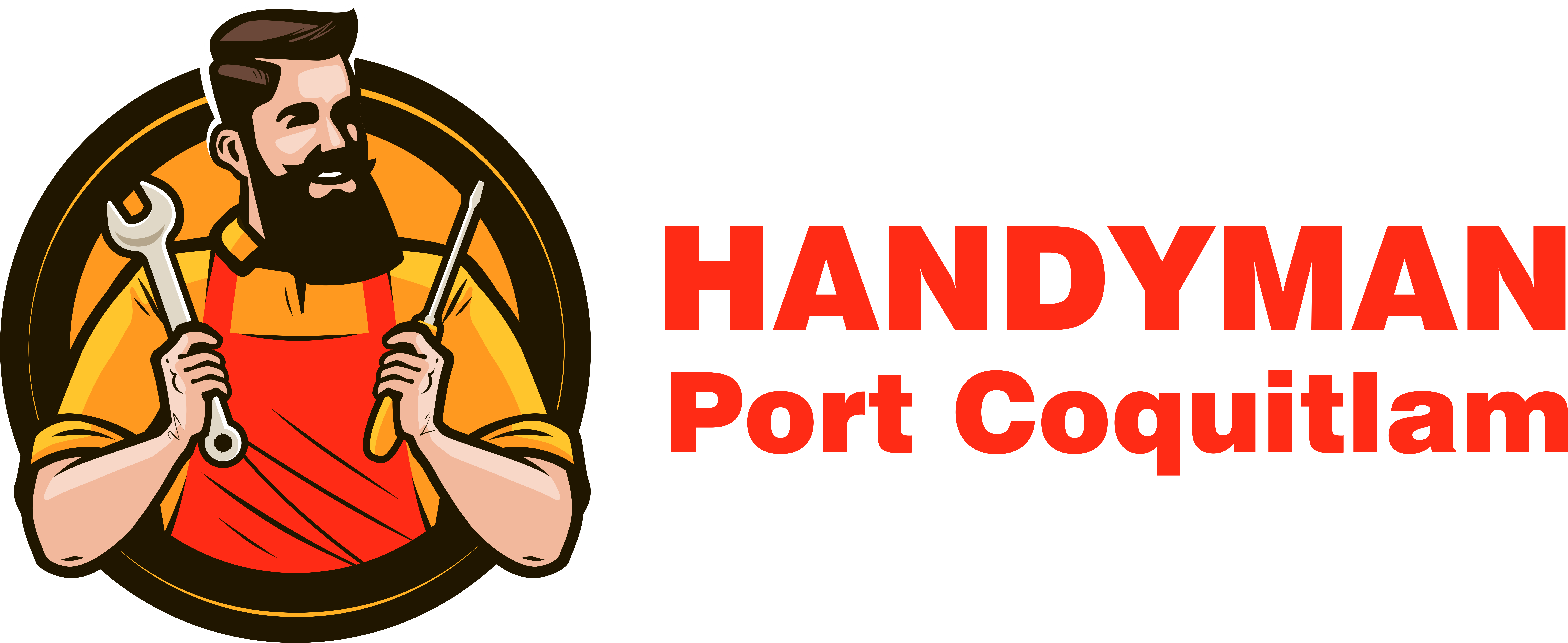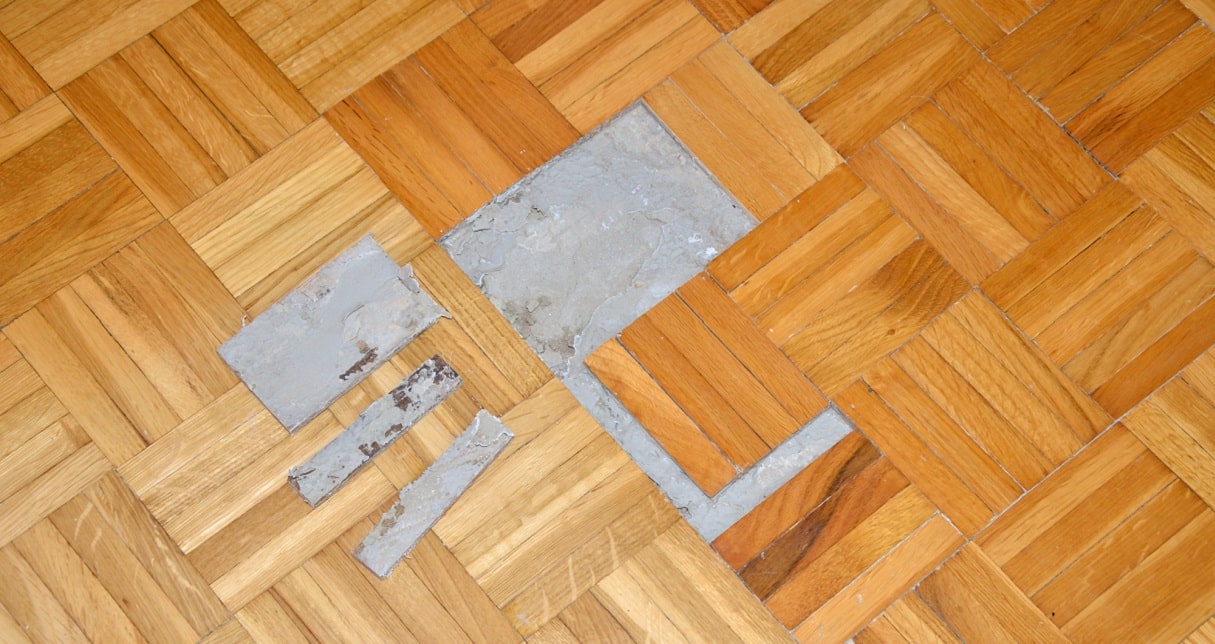
 Wood fading is one of the most common changes in parquet floors. Wood changes its shade in places where it is exposed to direct sunlight. Ultraviolet radiation can “tint” different types of wood differently: some become darker, while others, on the contrary, become lighter. This is a normal process of parquet maturation, which is most noticeable in the first year of use of the floors. The maturation period of wood varies among different types, and each has its own degree of resistance to ultraviolet rays. This factor should be taken into account when choosing a particular type of parquet for a well-lit room. Therefore, before making a final choice, make sure that the chosen parquet will suit the interior of your room, and whether the changed palette of its colors will harmonize with the color scheme of the finish over time. Tinted parquet practically does not change its shade even after several years, but heat-treated wood becomes lighter, a little closer to the natural color. All types of wood even out their shade, the parquet becomes less variegated and uniform. The color becomes deeper. The most noticeable change in color is seen in exotic red woods – cumaru, merbau, jatoba, etc. Light woods become darker, while dark woods, on the contrary, fade a little over time.
Wood fading is one of the most common changes in parquet floors. Wood changes its shade in places where it is exposed to direct sunlight. Ultraviolet radiation can “tint” different types of wood differently: some become darker, while others, on the contrary, become lighter. This is a normal process of parquet maturation, which is most noticeable in the first year of use of the floors. The maturation period of wood varies among different types, and each has its own degree of resistance to ultraviolet rays. This factor should be taken into account when choosing a particular type of parquet for a well-lit room. Therefore, before making a final choice, make sure that the chosen parquet will suit the interior of your room, and whether the changed palette of its colors will harmonize with the color scheme of the finish over time. Tinted parquet practically does not change its shade even after several years, but heat-treated wood becomes lighter, a little closer to the natural color. All types of wood even out their shade, the parquet becomes less variegated and uniform. The color becomes deeper. The most noticeable change in color is seen in exotic red woods – cumaru, merbau, jatoba, etc. Light woods become darker, while dark woods, on the contrary, fade a little over time.
During normal use, the change in the parquet shade occurs relatively predictably and stably. In addition to sunlight, this process can be adjusted by interaction with various types of liquids. This can be ordinary water, a reaction to detergents with an active component that is aggressive to the finishing coating of the parquet, waste products of domestic animals, and other reasons. Particular attention should be paid to animals and birds: their excrement contains chemically active substances that can, with a fairly short contact, affect even the modern paintwork of a metal car body, not to mention the capricious and sensitive to dirt parquet. As a result of such impacts, local areas of the floor that have been wetted will fade and become discolored. In such cases, the spilled liquid and dirt should be removed as soon as possible with a soft cloth and a mild detergent. Particularly heavy dirt can be removed with organic solvent-based products that are suitable in composition. In case of prolonged impact, local sanding or even replacement of several planks may be required.
The appearance of cracks and crevices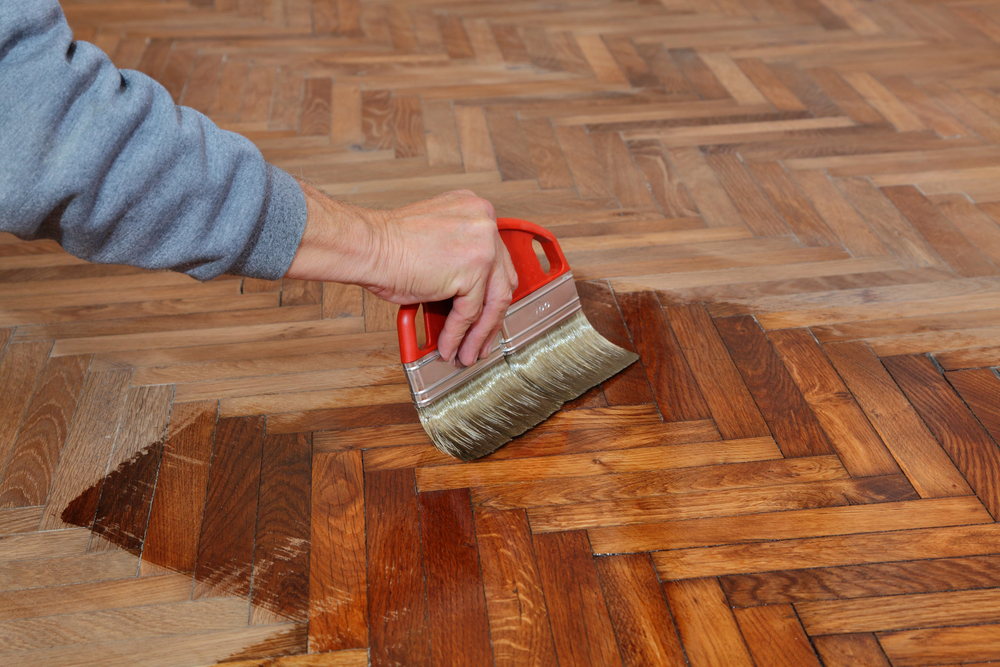
The appearance of cracks and crevices is usually caused by seasonal fluctuations in the temperature and humidity conditions of the premises. The winter period is accompanied by a decrease in humidity as a result of intensive operation of heating devices. At the same time, you should not open the windows wide open for ventilation for a long time, so as not to freeze the parquet. Frequent abrupt temperature changes are also harmful to it. The formation of small, barely noticeable cracks is allowed, and the floor does not cause any problems due to slight shrinkage of the wood. To make it easier for the parquet flooring to survive the new season, use air humidifiers. This can be a programmed mode for maintaining the temperature and humidity of the air conditioner, or an ordinary container with water. This optimal mode for wood corresponds to very comfortable conditions for a person with an air temperature of 18-25 ° C and humidity of 40-60%. With the end of the heating season, these cracks disappear without breaks in the varnish coating. Solid wood boards crack less if they are laid on thick plywood, which few people know. There are also species that change their geometric parameters the least, such as oak. Of the exotic species, American walnut cracks the least. After a few years, the expansion and contraction of the wood practically ends, i.e. the tree “dies” and visible cracking stops.
The winter period is a test of the quality of the parquet itself and its installation. If overdried or, on the contrary, damp parquet was used during the work, deformations can be significant. For parquet, the humidity of which exceeded the standard level at the time of installation, drying continues as part of the finished coating. Moisture may have already evaporated from the base, but it is still contained in the thickness of the board. And the varnished coating prevents both the penetration and evaporation of excess water. Because of this, the parquet can crack, swell or start to creak the next season. Overdried parquet intensively absorbs moisture from the air in the room, swells, which can lead to a rupture of the coating, damage to the joints, separation from the base and other deformations. An important point is the choice of high-quality accompanying materials, such as parquet glue and finishing agents for the top layer. There is a simple rule: the higher the density of the wood, the greater the risk that it will crack with a significant decrease in humidity. For this reason, exotic dense species cannot be used in fireplace rooms and subjected to drying. The most stable species is again oak, which “hardens” during its growth and reacts less to dryness than other hard species. Of the exotic species, the most stable is American walnut with a very elastic structure.
In summer, on the contrary, the relative humidity of the air exceeds the permissible level. If no measures are taken, the moisture content of the wood also increases, the parquet elements begin to absorb water and swell. Impregnation and decorative compounds are squeezed out from the joints of planks and boards, and after the space reserve is exhausted, the surface begins to swell. For this reason, a so-called temperature gap is left around the perimeter of the room so that the wood has room to expand.
Mechanical damage
Over time, mechanical damage can destroy even the most resistant protective coating of a parquet floor. Therefore, the task of the owner who cares about the durability of his parquet floor and the preservation of its appearance is to reduce such impacts as much as possible. These include:
- Damage caused by walking in rooms with parquet floors in outdoor shoes, high-heeled shoes.
- Damage from moving furniture on wheels or other furniture.
- Pets with their claws can significantly worsen the quality of the parquet finish with prolonged exposure.
What to do if the parquet has changed for the worse? Contact us! We will perform parquet replacement work. And your floor will please you again, as before!
continue reading

